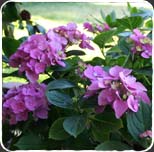
Bamboo can grow between 12 inches to 60 feet depending on the variety. It is a member of the grass family and can spread rapidly through above-ground shoots.
Bamboo is the main food of the endangered Panda bear. The shoots that grow from bamboo are edible.
Geography
Bamboo is associated with Asian countries by a number of people. The plant is home to warm and tropical climates. Climates that experience temperatures below 15 degrees C are dangerous for bamboo trees. The cold temperature will often kill the plant.
Preparing the Soil for Bamboo Plants
The soil should be rich as Bamboo grass requires plenty of nutrients. Fertilizer should be used that contains potassium and nitrogen. Mulch should be added below the soil to ensure that the soil does not dry out and will also help reduce the number of weeds that grow.
One of the benefits of growing Bamboo is that the plant has a strong immunity to maladies such as insects, fungi and disease.
Planting Bamboo
Spring or summer before the rainy season is the best time to plant Bamboo grass. Bamboo should be planted in an area that receives plenty of sunlight. The bamboo plants need to be planted before the roots dry out. To do this make sure that the roots and the yellow part of the stock are buried below the soil. The green part of the stock should be above the soil and receive plenty of sunlight.
Maintenance of Bamboo Grass
In most cases, bamboo will grow in large clumps which makes harvesting them difficult. To ensure that the plant does not get out of control, you may want to cut back some of the stocks if your bamboo trees do become too thick.
Bamboo also requires a great deal of rich soil. It is important that you weed your soil often to ensure that weeds do not consume the nutrients.
Removing Bamboo
In some instances you bamboo might outgrow your space. When this happens you may need to perform a removal. The best time to do this is after a good rain. If rain is not an option you may want to use your hose to dampen the soil so that you can easily dig up the dirt and roots. Bamboo roots usually grow a few inches beneath the soil as far as 100 feet from the parent plant.
Be sure you remove all roots and canes or the bamboo may grow back. The physical task requires a lot of strength. If you don’t feel that you are strong enough for this task please contact us. We can send out a professional to help you thin out or remove your bamboo trees.
If you have removed your bamboo but stubborn section continue to produce new canes a herbicide solution that contains glyphosate can be used. Be sure to follow the directions carefully and avoid over spraying if other plants share a common area with your bamboo.








